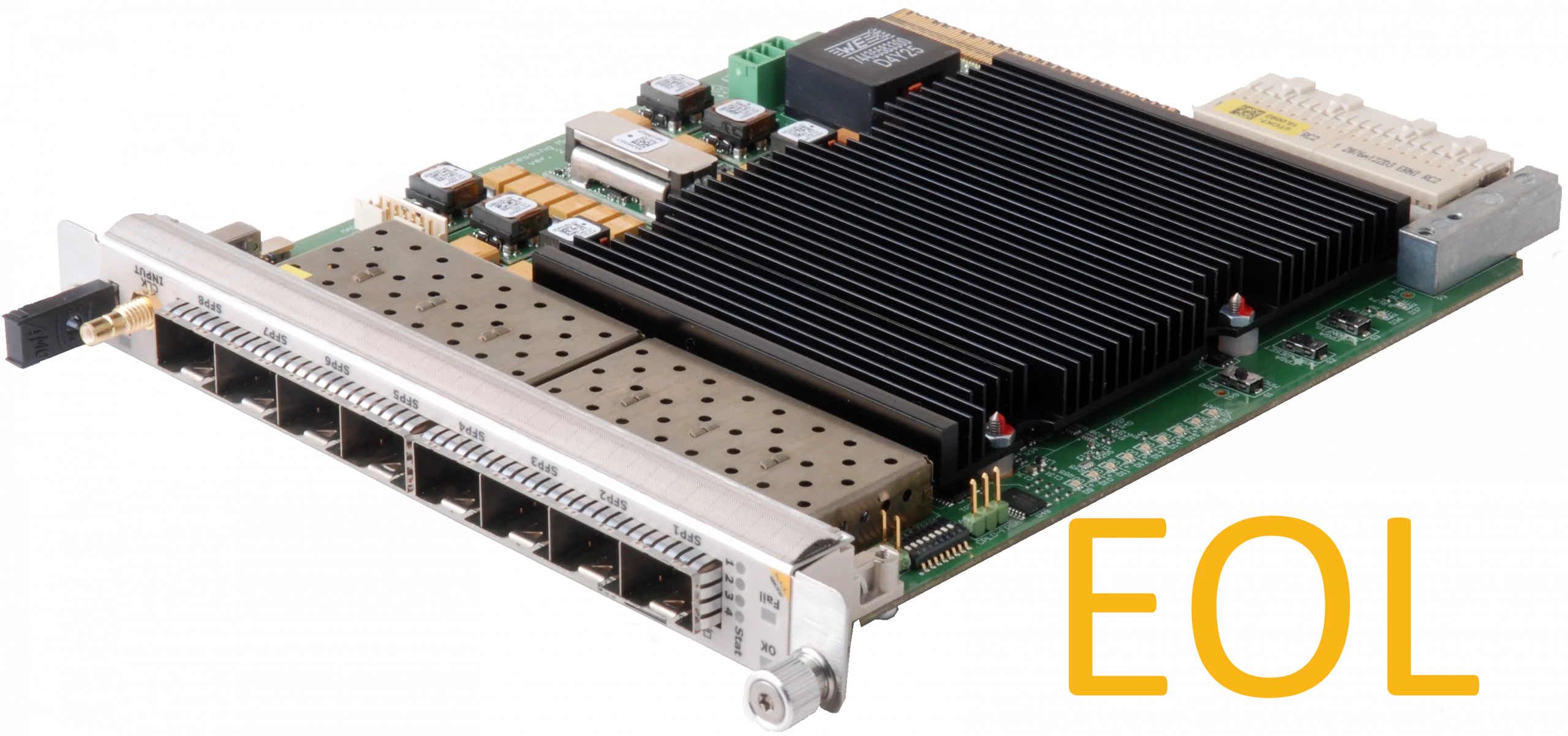

NAT-AMC-TCK7
FPGA board for high-performance, low-latency data processing
Description
The NAT-AMC-TCK7 is a high-performance, low-latency data processing AMC combining processing power, memory, communications links, and reference clock signals in double mid-size form factor.
It is based on the Xilinx Kintex-7 FPGA, which provides industry-leading performance-per-watt. In default assembly option the FPGA offers 24 multi-gigabit transceivers, which support bitrates up to 10 Gbps (12.5 Gbps with speed grade -3), and PCIe Gen2 communication, so the x4 link can provide a throughput of 20 Gbps.
For support functions such as multiplexing and switching of SPI and JTAG lines, as well as for driving status LED, the NAT-AMC-TCK7 features a XILINX XC2C256 CoolRunner-II CPLD.
For temporary data storage, the NAT-AMC-TCK7 features four SDRAM DDR3 memory chips, each with a capacity of 4Gb (16 Gb in total), operating with a data rate of 1066 Mbit/s and a width of 64 bit. The memory circuits share the address and control buses. For permanent data storage, the NAT-AMC-TCK7 is equipped with a Quad SPI FLASH containing the FPGA bit stream; the memory space beyond the bit stream is available for user application.
At the front panel, up to eight optical fibre SFP+- connections provide low-latency connections to, for example, LLRF components. A reference clock signal can be received via a SMB connector. Moreover, the NAT-AMC-TCK7 features low-latency links towards the backplane via Zone1 connector, and towards an optional RTM via Zone3 connector.
Developed with DESY, the Deutsches Elektronen-Synchrotron, and already deployed as a low-level radio frequency (LLRF) cavity field stabilizing controller, the NAT-AMC-TCK7 is suitable for a range of data processing applications from wireless network remote radio head to software-defined radio (SDR).
Key Features
- AMC form factor, double mid- or full-size
Processing Resources
- Xilinx Kintex-7 FPGA XC7K355T (default) or XC7420T (option)
- 24 multi-gigabit transceivers supporting bitrates up to 12.5 Gbps @ speed grade -3
- PCIe Gen2 x4 communication with 20 Gbps
- XILINX XC2C256 CoolRunner-II CPLD
- Memory
Front Panel Connectivity
- Up to 8x 10 Gbps* SFP+ optical interfaces
- SMB connector for reference Clock IN
- UART via MicroUSB (RS232-via USB) to FPGA and MMC
- Four LEDs for FPGA application free use
- Status / Fault / Hot-Swap LEDs
Backplane Connectivity
- 2x 1 GbE at AMC Ports 0/1
- 2x LLL at AMC Ports 2/3
- PCIe Gen2 x4 at AMC Ports 4-7
- 4x LLL at AMC Ports 8-11 and 12-15
- TCLKA/B
- 8x MLVDS at AMC Ports 17-20
Operating System Support
- Linux operating system
- Partial reconfiguration and firmware upgrade support
Order Codes
NAT-AMC-TCK7- [Option]
| – | double, mid-size AMC with Kintex-7 (XC7K420T) |
Solutions / Applications
- High Energy Physics Research
- Wireless Remote Radio Heads (RRH)
- Software Defined Radio (SDR)
- LTE Baseband Processing
- Avionics Video Distribution System